Exploring Photovoltaics
Teacher Guide
Hands-on investigations to teach secondary students how electricity is generated using photovoltaics and other solar systems. Students will explore the variables affecting photovoltaic cells.


Grade



Science






Hands-on investigations to teach secondary students how electricity is generated using photovoltaics and other solar systems. Students will explore the variables affecting photovoltaic cells.


Grade



Science





Constance Beatty K ank akee, IL
La’Shree Branch Highland , IN
Jim M. Brown Saratoga Springs, NY
Mark Case Randleman, NC
Lisa Cephas Philadelphia, PA
Nina Corley Galveston, T X
Samantha Danielli Vienna, VA
Shannon Donovan Greene, RI
Michelle Garlick Long Grove, IL
Michelle Gay Daphne, AL
Nancy Gi ord Harwich, MA
Erin Gockel Farmington, NM
Robert Griegoliet Naperville, IL
DaNel Hogan Tucson, AZ
Greg Holman Paradise, CA
Barbara Lazar Albuquerque, NM
Rober t Lazar Albuquerque, NM
Melissa McDonald Gaithersburg, MD
Paula Miller Philadelphia, PA
Hallie Mills St. Peters, MO
Jennifer MitchellWinterbottom Pottstown, PA
Monette Monttenon Montgomery, AL
Mollie Mukhamedov Por t St. Lucie, FL
Cori Nelson Win eld, IL
Don Pruett Jr. Puyallup, WA
Judy Reeves Lake Charles, LA
Libby Robertson Chicago, IL
Amy Schott Raleigh, NC
Tom Spencer Chesapeake, VA
Jennifer Trochez Maclean Los Angeles, CA
Wayne Yonkelowitz Fayetteville, W V
The mission of The NEED Project is to promote an energy conscious and educated society by creating effective networks of students, educators, business, government and community leaders to design and deliver objective, multisided energy education programs.
NEED curriculum is available for reproduction by classroom teachers only. NEED curriculum may only be reproduced for use outside the classroom setting when express written permission is obtained in advance from The NEED Project. Permission for use can be obtained by contacting info@need.org
In support of NEED, the national Teacher Advisory Board (TAB) is dedicated to developing and promoting standardsbased energy curriculum and training.
NEED believes in providing teachers and students with the most recently reported, available, and accurate energy data. Most statistics and data contained within this guide are derived from the U.S. Energy Information Administration. Data is compiled and updated annually where available. Where annual updates are not available, the most current, complete data year available at the time of updates is accessed and printed in NEED materials. To further research energy data, visit the EIA website at www.eia.gov

Printed on Recycled Paper
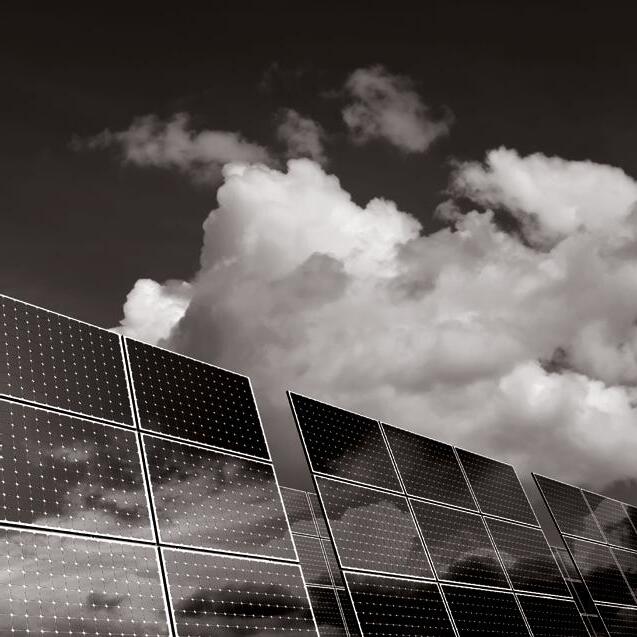
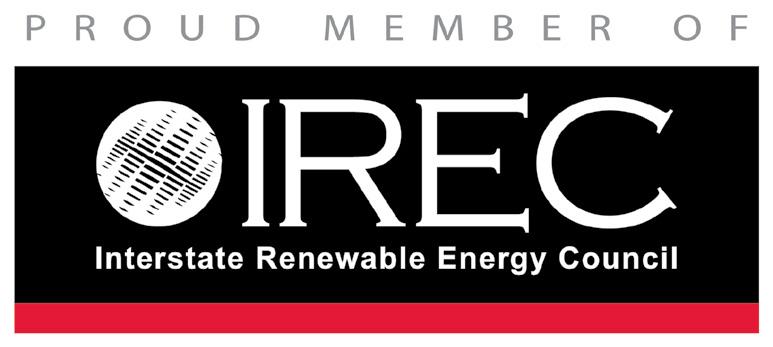
www.need.org/educators/curriculum-correlations/
This guide effectively supports many Next Generation Science Standards. This material can satisfy performance expectations, science and engineering practices, disciplinary core ideas, and cross cutting concepts within your required curriculum. For more details on these correlations, please visit NEED’s curriculum correlations website.
This guide has been correlated to the Common Core State Standards in both language arts and mathematics. These correlations are broken down by grade level and guide title, and can be downloaded as a spreadsheet from the NEED curriculum correlations website.
This guide has been correlated to each state’s individual science standards. These correlations are broken down by grade level and guide title, and can be downloaded as a spreadsheet from the NEED website.

PV Ping Pong
24 Ping pong balls
Solar 1
Alligator clips
PV Panels
Buzzers or LEDs
Multimeters
Solar 2
Alligator clips
PV Panels
Buzzers or LEDs
Multimeters
Solar 3
Alligator clips
PV Panels
Buzzers or LEDs
Multimeters
Solar 4
Alligator clips
PV Panels
Buzzers or LEDs
Multimeters
Solar 5
Alligator clips
PV Panels
Buzzers or LEDs
Multimeters
Solar 6
Alligator clips
PV Panels
Buzzers or LEDs
Multimeters
Solar 7
Alligator clips
PV Panels
Buzzers or LEDs
Multimeters
Solar 8
Alligator clips
PV Panels
Buzzers or LEDs
Multimeters
Extensions
Alligator clips
PV Panels
Buzzers or LEDs
Multimeters
Flashlight
Colored tape
Sticky name tags
Light source
Light source
Light source Bright
Moderate
Dim
Protractors
Light source
Measuring tape or meter stick
Light source
Cardboard
Light source
Ice water bath
Hairdryer
Light source
Zip-close plastic bag
Ice water
Stopwatch
Light source
Light source
Secondary, grades 9-12
Note
This unit focuses on solar energy as it relates to photovoltaic cells and electricity. For information on solar energy and heating, you may wish to copy the Solar Space Heating article on pages 25-26 for your students to read.
: Internet Resources
American Solar Energy Society www.ases.org
Lawerance Berkeley Lab Tracking the Sun www.emp.lbl.gov/tracking-the-sun
Energy Information Administration www.eia.gov
EIA Energy Kids
www.eia.gov/kids
Interstate Renewable Energy Council
www.irecusa.org
Interstate Renewable Energy Council
Solar Career Map
www.irecsolarcareermap.org
Solar Energy Industries Association www.seia.org
U.S. Department of Energy, Solar Energy Technologies Office www.energy.gov/eere/solar/solarenergy-technologies-office
U.S. Department of the Interior Bureau of Land Management www.blm.gov
The Exploring Photovoltaics unit focuses on how solar energy is used to generate electricity. The student informational text has information on photovoltaic cells, concentrated solar power, and emerging solar technologies.
Five to six 45-minute class periods
Familiarize yourself with the Teacher and Student Guides, and with the materials in the kit. Be sure you read the informational text in the Student Guide and understand the information associated with each activity you choose to conduct.
Review the teacher masters on pages 16, and 19-24. Make copies or download digital files to project as needed.
Collect the materials that are not included in the kit. See the Additional Materials Needed list on page 5. It is suggested that you test the equipment and read the operating manuals prior to instruction.
Set up six centers that each have 2 multimeters, one PV panel, a buzzer, 2 LEDs, 5-6 alligator clips, and a reflecting lamp or access to direct sunlight. Investigations can be conducted outside. These will work with many light sources including, incandescent, LED, and even a smart phone flashlight. NOTE: These panels will work with many light sources, including (but not limited to) incandescent, LED, or even a smart phone flashlight. Be sure to test your light sources ahead of time to ensure they function with these panels.
Throughout this curriculum, science notebooks are referenced. If you currently use science notebooks or journals, you may have your students continue using them. A rubric to guide assessment of student notebooks can be found on page 9.
In addition to science notebooks, student worksheets have been included in the Student Guide. Depending on your students’ level of independence and familiarity with the scientific process, you may choose to use these instead of science notebooks. Or, as appropriate, you may want to make copies of worksheets and have your students glue or tape the copies into their notebooks.
Students will be able to describe how a PV cell converts radiant energy into electricity.
Students will be able to calculate power in watts using a PV module and compare several module outputs.
1. Distribute the Student Guides to the students and have them read the informational text in class or as homework. Students should answer the review questions on page 17 of the Student Guide.
2. Play Solar Energy Bingo and/or Solar Energy in the Round as an introductory activity to gauge student comfortability with solar energy vocabulary. Instructions are found on pages 13-15. Play these games throughout the unit as formative asessments.
3. Review and discuss a PV cell and its function with the class using the Photovoltaic Cell master on page 16.
4. Assign students to roles and set up and run the PV Ping Pong Simulation as written on page 17.
5. Discuss answers to the review questions with the students. Answers are provided on page 10 of the Teacher Guide.
6. Place the students in their groups at the six centers.
7. Using the Digital Multimeter master on page 19 (also found on page 20 of the Student Guide) and the operating manual, explain how to use the multimeter. Remind students that when assembling their investigations, their set up may require extra lengths of wiring than the diagrams demonstrate, due to work space and lengths of connections. As long as the connections follow the general setup of the diagram, a longer line of wires will not matter. Review page 20 and discuss any measurement units or formulas that students will need to utilize in their activities.
8. Direct students to Connecting and Using a Solar Panel on page 21 in the Student Guide. Discuss how to connect all the parts in the system. Remind students that the diagrams may include red and black lines to connect things correctly, but the color of alligator clips they use is not important.
9. Review any lab safety rules you have with your students.
10. Instruct the students to familiarize themselves with the equipment and complete the first investigation, Solar 1 on page 22 of the Student Guide.
Objectives
Students will be able to assemble a series circuit.
Students will be able to describe how light intensity and the angle of the panel will affect a PV panel’s output.
Procedure
1. Place the students in their groups at the six centers.
2. Review series circuits using the masters on pages 21-22 and the Solar Array Wiring master on page 23. Instruct the students to conduct Solar 2, Solar 3, and Solar 4. Let students know that the series connection in Solar 2 is the setup they will use for most of the investigations throughout the entire curriculum unit.
3. Instruct students to work as groups when conducting the investigations, but to answer the conclusion and reflection questions individually.
4. When all groups have completed their work, discuss the students’ results. Reference the expected outcomes, if needed, on page 11 when discussing the results.
Objectives
Students will be able to assemble a series circuit.
Students will be able to describe how distance from a light source, ambient temperature, and shading affect a PV panel’s output.
Procedure
1. Have students return to the six centers in their small groups.
2. Instruct students to conduct Solar 5, Solar 6, and Solar 7 and record the results as group work, but to answer the conclusion and reflection questions individually.
3. When all groups have completed their work, discuss the students’ results. Reference the expected outcomes, if needed, on page 11 when discussing the results.
Objective
Students will be able to describe how the electrical output of a PV panel is affected when wired in series and in parallel.
Procedure
1. Introduce Solar 8 to students. Review parallel circuits using the masters on pages 20-21.
2. Instruct students to conduct the investigation and record the results as group work, but to answer the conclusion and reflection questions individually.
3. When all groups have completed their work, discuss the students’ results. Reference the expected outcomes, if needed, on page 11 when discussing the results.
4. Help students make the connection between their small PV panels and much larger, commercially available solar panels.
Extensions
1. PV Investigation Extensions
Combine groups so you have three large groups that will share equipment.
Have the students conduct the extension investigations (1-4) on pages 35-39 of the Student Guide.
Review and discuss the results, conclusions, reflections, and challenges as a class.
2. Can Solar Meet Your Electricity Demands?
Have the students analyze their electricity usage and peak sun hours to determine whether or not solar energy can meet their demands. Students should use their own electric bill to determine their family’s electricity usage. If they do not have access to an electricity bill, students can use the national average of 899 kWh a month for electricity consumption. Have students complete page 40 of the Student Guide.
A full page U.S. Solar Resource Map is included on page 24 of the Teacher Guide and on page 41 of the Student Guide. For color maps and more information about solar resources in the U.S., visit the National Renewable Energy Laboratory website at www.nrel.gov/gis/solar-resource-maps.html
As a further extension, have your students analyze the payback period in cities that have different peak solar hours than your city.
3. Your Solar-Powered Cabin
Have students work in pairs or individually to power “Uncle Ed’s” cabin on pages 42-43 of the Student Guide.
Have students present or discuss their plans with the class.
4. Data Collection
Download NEED’s Schools Going Solar guide from NEED.org/shop for data collection activities for solar installations.
Evaluation and Asessments
There are a variety of assessment opportunities provided in this module. These include:
Conduct the Solar-Powered Cabin activity as an assessment.
Revisit the Review Questions on page 17 of the Student Guide.
Play Solar Energy Bingo or Solar Energy in the Round as review activities before an assessment. Instructions can be found on pages 13-15.
Evaluate student work and group work using the rubrics on page 9.
Evaluate the unit with the class using the Evaluation Form on page 31.
This is a sample rubric that can be used with inquiry investigations and science notebooks. You may choose to only assess one area at a time, or look at an investigation as a whole. It is suggested that you share this rubric with students and discuss the different components.
4 Written explanations illustrate accurate and thorough understanding of scientific concepts. The student independently conducts investigations and designs and carries out his or her own investigations.
3 Written explanations illustrate an accurate understanding of most scientific concepts. The student follows procedures accurately to conduct given investigations, begins to design his or her own investigations.
2 Written explanations illustrate a limited understanding of scientific concepts.
1 Written explanations illustrate an inaccurate understanding of scientific concepts.
The student may not conduct an investigation completely, parts of the inquiry process are missing.
The student needs significant support to conduct an investigation.
Comprehensive data is collected and thorough observations are made. Diagrams, charts, tables, and graphs are used appropriately. Data and observations are presented clearly and neatly with appropriate labels.
Necessary data is collected. Observations are recorded. Diagrams, charts, tables, and graphs are used appropriately most of the time. Data is presented clearly.
Some data is collected. The student may lean more heavily on observations. Diagrams, charts, tables, and graphs may be used inappropriately or have some missing information.
Data and/or observations are missing or inaccurate.
The student clearly communicates what was learned and uses strong evidence to support reasoning. The conclusion includes application to real life situations.
The student communicates what was learned and uses some evidence to support reasoning.
The student communicates what was learned but is missing evidence to support reasoning.
The conclusion is missing or inaccurate.
This rubric may be used with the extensions or for any other group work you ask the students to do.
4 Project covers the topic indepth with many details and examples. Subject knowledge is excellent.
3 Project includes essential information about the topic. Subject knowledge is good.
2 Project includes essential information about the topic, but there are 1-2 factual errors.
1 Project includes minimal information or there are several factual errors.
Content is very well organized and presented in a logical sequence.
Content is logically organized.
Content is logically organized with a few confusing sections.
There is no clear organizational structure, just a compilation of facts.
Project shows much original thought. Ideas are creative and inventive.
The workload is divided and shared equally by all members of the group.
Project shows some original thought. Work shows new ideas and insights.
The workload is divided and shared fairly equally by all group members, but workloads may vary.
Project provides essential information, but there is little evidence of original thinking.
Project provides some essential information, but no original thought.
The workload is divided, but one person in the group is viewed as not doing a fair share of the work.
The workload is not divided, or several members are not doing a fair share of the work.
1. Identify and explain the nuclear reaction in the sun that produces radiant energy. Smaller hydrogen nuclei fuse together to create larger helium atoms. During the process, some of the matter is converted and emitted as radiant energy.
2. Define renewable energy. Explain why solar energy is considered renewable. Renewable energy sources are resources that are continuously replenished by nature and never run out. Fusion reactions that power the sun will generate light for billions of years to come.
3. Explain why a car parked in the sun becomes hot inside. Light passes through the windows of a car and is absorbed by the interior fixtures, where it is converted and trapped as heat. The car is a solar collector.
4. Why is a solar cell called a PV cell? What does the word photovoltaic mean? A solar cell is called a PV cell because it uses light or solar energy to create electricity. “Photo” refers to light and “volt” is a measure of electricity.
5. Explain the conversion efficiency of a PV cell. How efficient are PV cells today? Conversion efficiency is the proportion of radiant energy the cell is able to convert to electricity. Current PV cells convert approximately 13-30 percent of the radiant energy striking them into electricity.
6. How do new thin-film technologies compare to conventional PV cells? New technologies and designs have produced conversion efficiencies as high as 46 percent, but with limitations to their uses.
7. Explain briefly how a PV cell converts radiant energy into electricity. A PV cell is made of silicon with layers. Each layer has a different “dopant” applied to it creating positive and negative characters. When these layers meet, free electrons from the n-type layer flow into the p-type layer creating an electric field at their junction. As radiant energy hits the electrons in the junction, the electrons are knocked free and attracted to the n-type layer. A conducting wire allows the free electrons to travel away from each other in a complete circuit, creating an electric current.
8. Do PV modules produce AC or DC current? Which type of current do most appliances use? What device converts DC to AC current? PV modules produce direct current. Most appliances and electronics require alternating current to run, thus an inverter may be required to convert DC to AC.
9. Define the following electrical measures and the unit of measurement for each. voltage: the amount of pressure applied to make electrons move, strength of the current in a circuit. Units = volts (V) current: electrons flowing between two points with a difference in voltage. Units = amperes or amps (A) resistance: slowing the flow of electrons. Units = ohms (Ω) power: the amount of electric current flowing based on voltage applied, amount of electricity required to start or operate a load. Units = watts (W)
10. What is the average cost of a kilowatt-hour of electricity for U.S. residential customers? The average cost of a kWh for U.S. residents is about 15 cents.
Question: How do similar PV modules in an array vary in electrical output?
Conclusion: Each module should produce similar, though perhaps not identical, results.
Question: How does a PV array wired in series affect the electrical output?
Conclusion: Combining PV modules in series increases the voltage; the current should remain constant.
Question: How does light intensity affect the electrical output of a PV array wired in series?
Conclusion: The greater the light intensity, the greater the electrical output.
Question: How does the angle of the light source relative to a PV panel affect the output of the panel?
Conclusion: The greater the angle between the panel and light source, the less the electrical output.
Question: How does the distance from a light source affect the electrical output of a PV panel?
Conclusion: As the distance increases, the electrical output decreases.
Misconception Alert: The sun is approximately 93 million miles away from Earth. Encourage students to consider how much difference there might be when if ground-mounting an array versus placing it on a roof.
Question: How does covering different parts of a PV panel affect its electrical output?
Conclusion: The electrical output decreases in proportion to the size of the shadow on the panel.
Question: How does surface temperature affect the electrical output of a PV array wired in series?
Conclusion: Cooler temperatures result in slightly higher outputs; high temperatures tend to decrease a panel’s output.
Misconception Alert: Many assume solar arrays are most efficient in the brightest, hottest, sunny conditions. However, while radiation (sunny days) is required, greater temperature areas with high average solar concentrations may find their systems to be less efficient than those in areas with lower average concentration and lower average temperatures.
Question: How does a PV panel wired in parallel affect the electrical output?
Conclusion: Parallel wiring increases the current while holding the voltage constant.
Below are twelve 12-volt photovoltaic modules rated at 80 watts each. Design an array to deliver 48 volts to the inverter by using a combination of series and parallel circuits. Use dashed lines to represent the black (-) wires, and solid lines to represent the red (+) wires. Below are two possible wiring configurations.
Duplicate as many Solar Energy Bingo sheets (found on page 27 of the Teacher Guide) as needed for each person in your group. In addition, decide now if you want to give the winner of your game a prize and what the prize will be.
Pass out one Solar Energy Bingo sheet to each member of the group.
Give the group the following instructions to create bingo cards:
This bingo activity is very similar to regular bingo. However, there are a few things you’ll need to know to play this game. First, please take a minute to look at your bingo sheet and read the 16 statements at the top of the page. Shortly, you’ll be going around the room trying to find 16 people about whom the statements are true so you can write their names in one of the 16 boxes.
When I give you the signal, you’ll get up and ask a person if a statement at the top of your bingo sheet is true for them. If the person gives what you believe is a correct response, write the person’s name in the corresponding box on the lower part of the page. For example, if you ask a person question “D” and they give you what you think is a correct response, then go ahead and write the person’s name in box D. A correct response is important because later on, if you get bingo, that person will be asked to answer the question correctly in front of the group. If they can’t answer the question correctly, then you lose bingo. So, if someone gives you an incorrect answer, ask someone else! Don’t use your name for one of the boxes or use the same person’s name twice.
Try to fill all 16 boxes in the next 20 minutes. This will increase your chances of winning. After the 20 minutes are up, please sit down and I will begin asking players to stand up and give their names. Are there any questions? You’ll now have 20 minutes. Go!
During the next 20 minutes, move around the room to assist the players. Every five minutes or so tell the players how many minutes are remaining in the game. Give the players a warning when just a minute or two remains. When the 20 minutes are up, stop the players and ask them to be seated.
Give the class the following instructions to play the game:
When I point to you, please stand up and in a LOUD and CLEAR voice give us your name. Now, if anyone has the name of the person I call on, put a big “X” in the box with that person’s name. When you get four names in a row—across, down, or diagonally—shout “Bingo!” Then I’ll ask you to come up front to verify your results.
Let’s start off with you (point to a player in the group). Please stand and give us your name. (Player gives name. Let’s say the player’s name was “Joe.”) Okay, players, if any of you have Joe’s name in one of your boxes, go ahead and put an “X” through that box.
When the first player shouts “Bingo,” ask them to come to the front of the room. Ask them to give their name. Then ask them to tell the group how their bingo run was made, e.g., down from A to M, across from E to H, and so on.
Solar Energy Bingo is a great icebreaker for a NEED workshop or conference. As a classroom activity, it also makes a great introduction to an energy unit.
5 minutes
45 minutes
Bingos are available on several different topics. Check out these resources for more bingo options!
Biomass Bingo—Energy Stories and More
Change a Light Bingo—Energy Conservation Contract
Coal Bingo—Coal guides
Energy Bingo—Energy Games and Icebreakers
Energy Efficiency Bingo— School Energy Managers and School Energy Experts
Hydropower Bingo— Hydropower guides
Hydrogen Bingo—H2 Educate
Nuclear Energy Bingo— Nuclear guides
Oil and Natural Gas Bingo— Oil and Natural Gas guides
Science of Energy Bingo— Science of Energy guides
Wind Energy Bingo—Wind guides
Now you need to verify the bingo winner’s results. Ask the bingo winner to call out the first person’s name on their bingo run. That player then stands and the bingo winner asks them the question which they previously answered during the 20-minute session. For example, if the statement was “can name two renewable sources of energy,” the player must now name two sources. If they can answer the question correctly, the bingo winner calls out the next person’s name on their bingo run. However, if they do not answer the question correctly, the bingo winner does not have bingo after all and must sit down with the rest of the players. You should continue to point to players until another person yells “Bingo.”
A. Has used a solar clothes dryer
E. Can explain how solar energy drives the water cycle
I. Knows how plants convert solar energy into chemical energy
M. Can name two advantages of solar energy
B. Knows the average conversion efficiency of PV cells
F. Has used a photovoltaic cell
J. Uses passive solar energy at home
N. Knows the energy conversion that a PV cell performs
Has hung clothes outside to dry
Sun evaporates water in lakes and oceans, water vapor rises and becomes clouds, rains to replenish
ask for location/description
C. Knows the nuclear process in the sun’s core
D. Knows how radiant energy travels through space
G. Rides in a solar collector H. Can explain how solar energy produces wind
K. Has seen a solar water heater
O. Can explain why dark clothes make you hotter in the sun
L. Has cooked food in a solar oven
P. Owns solar protection equipment
In electromagnetic waves (or transverse waves)
Allows sun to enter through windows for
Car without tinted windows is a solar collector-like a greenhouse
Sun heats the Earth’s surface unevenly-hot air rises and cooler air moves in
ask for location/description ask for description
Dark colors absorb more radiant energy and turn it into thermal energy
Sun screen, sunglasses, etc.
Copy the Solar Energy in the Round cards on pages 28-30 onto card stock and cut into individual cards.
Make an additional copy to use as your answer key. These pages do not need to be cut into cards.
Have the Exploring Photovoltaics Student Guides or NEED’s Secondary Energy Infobooks available for quick reference. Infobooks can be downloaded from NEED.org/shop.
Distribute one card to each student. If you have cards left over, give some students two cards so that all of the cards are distributed.
Have the students look at their bolded words at the top of the cards. Give them five minutes to review the information about their words.
Choose a student to begin the round and give the following instructions:
Read the question on your card. The student with the correct answer will stand up and read the bolded answer, “I have _____.”
That student will then read the question on their card, and the round will continue until the first student stands up and answers a question, signaling the end of the round.
If there is a disagreement about the correct answer, have the students listen to the question carefully looking for key words (forms versus sources, for example) and discuss until a consensus is reached about the correct answer.
Give each student or pair a set of cards.
Students will put the cards in order, taping or arranging each card so that the answer is directly under the question.
Have students connect the cards to fit in a circle or have them arrange them in a column.
Solar Energy in the Round is a quick, entertaining game to reinforce vocabulary and information about solar energy and photovoltaics.
5–12
5 minutes
10–20 minutes
“In the Rounds” are available on several different topics. Check out these guides for more, fun “In the Round” examples!
Coal in the Round—Coal guides
Conservation in the Round— School Energy Managers, School Energy Experts
Energy in the Round—Energy Games and Icebreakers
Forms of Energy in the Round— Science of Energy guides
Hydrogen in the Round—H2 Educate
Oil and Natural Gas Industry in the Round—Fossil Fuels to Products, Exploring Oil and Natural Gas
Uranium in the Round—Nuclear guides
Solar energy can be used to produce electricity without any chemical reaction. This process, known as the photoelectric effect, allows electrons to be ejected or emitted from the surface of a material when photons of light strike the material. Solar panels, or photovoltaic cells, are the devices we use to collect radiant energy from the sun and turn it directly into electricity to power our homes, schools, and businesses. This process, however, can be somewhat mystifying to students. In this simulation, students will act as the layers of a solar cell within a solar panel, photons of light, and electrons on the move.
20 – 25 Foam or tennis balls
Flashlight
Colored tape
Sticky name tags
Photovoltaic Cell master
Set up two lines of tape on the floor for students to stand on. The lines should be facing each other with a few feet between them.
Create a circle behind one of the tape lines. This will be the photon home.
Write out name tags for each of the roles. This can also be done by the students once roles are assigned. You may choose to get “fancy” giving name tags or props that resemble roles as well (i.e. N-layers = N, P-layers = P, Photons of light = a flashy item, etc.).
1. Show students examples of videos or animations of how a PV cell works. Some good examples include: PV Interactive Infographic, SaveOn Energy: www.saveonenergy.com/how-solar-panels-work/ Brown University Sci Toons: www.youtube.com/watch?v=UJ8XW9AgUrw
2. Assign students to roles.
3. Ask the P-layer students to stand on one line and the N-layer students to stand on the other line so that they are facing each other. Tell them the P-N junction is between them. Have the students on each line hold hands “wiring“ themselves together.
4. The electrical load(s) should stand at the end of two lines. Students on the end of each line should hold hands with the electrical load, forming an open loop from P-layer through electrical load and on to N-layer.
5. Ask the photons to congregate in the photon circle, their “light source”.
6. Give each N-layer student a ball. Tell students these are electrons. P-layer students should have none but should want to receive them.
7. When you signal, photons must leave the light source circle and tap a P-layer student on the shoulder. They should then return to the circle and repeat the process.
8. When a P-layer student with a ball feels a tap, he or she should frantically wave their arms to indicate readiness to accept a ball (electron).
9. When N-layer students see the P-layer students across from them wave their arms, they should toss their electrons to the P-layer students, who will catch them.
10. When a P-layer student catches an electron, they should pass their electron down to the next person in line towards the electrical load to start the flow of current (or balls) toward the electrical load student. Students may need to be prepared to “accept” an electron from a neighbor in their layer and continue passing it down the line even if they’ve been tapped and were signaling to the N-layer for a free electron of their own. Encourage your N-layer students to only toss to a free-handed P-layer student.
11. When the electrical load student receives an electron, he or she should turn on his or her flashlight and yell “WOOO HOO,” and turn it off as they pass the electron to the other side.
12. As electrons come to the N-layer from the load, they should immediately be tossed again to the signaling player in the P-layer.
13. Simulate darkness by having photon students sit in their circle, not moving. P-layer students should stand, holding electrons, ready to receive photons. CONTINUED ON NEXT
N-layer students – 17
P- layer students – 17
Photon students – 10 Ball
Electrical load students – 1-2 photon circle
Extensions
Have students determine how they would extend the simulation to include more solar arrays and devices into the circuitry.
Have students write a description of how PV cells work.
Have students design a simulation to showcase how a concentrated solar power (CSP) facility operates.
ROTARY
DC Voltage ( )
1. Connect RED lead to VΩmA jack and BLACK to COM.
2. Set ROTARY SWITCH to highest setting on DC VOLTAGE scale (1000).
3. Connect leads to the device to be tested using the alligator clips provided.
4. Adjust ROTARY SWITCH to lower settings until a satisfactory reading is obtained.
5. With the solar modules or array, the 20 DCV setting usually provides the best reading.
DC Current ( )
1. Connect RED lead to VΩmA jack and BLACK to COM.
2. Set ROTARY SWITCH to 10 ADC setting.
3. Connect leads to the device to be tested using the alligator clips provided.
Note: The reading indicates DC AMPS; a reading of 0.25 amps equals 250 mA (milliamps).
4. With the solar modules or array, the 200mA DC setting usually provides the best reading.
(the force)
(the flow)
(the anti-flow)
1 Ampere = 1 coulomb/second
1 Coulomb = 6.24 x 1018 electrons (about a triple axle dump truck full of sand where one grain of sand is one electron)
Smaller (m)illi x 1/1000 or .001 (µ) micro x 1/1000000 or .000001 (n)ano x1/100000000 or .000000001 (p)ico x 1/1000000000000 or .000000000001
Bigger (K)ilo x 1,000 (M)ega x 1,000,000 (G)iga x 1,000,000,000
V = I x R
I = V/R
R = V/I
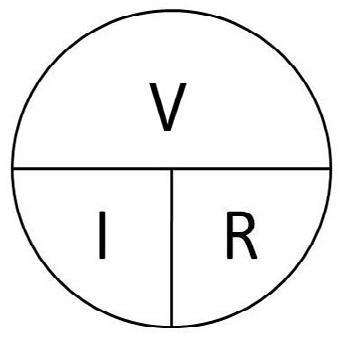
The formula pie works for any three variable equation. Put your finger on the variable you want to solve for and the operation you need is revealed.
Series Resistance (Resistance is additive)
RT= R1 + R2 + R3… +Rn
Parallel Resistance (Resistance is reciprocal)
1/RT= 1/R1 + 1/R2+ 1/R3… +1/Rn
Note: ALWAYS convert the values you are working with to the “BASE unit.” For example—don’t plug kilo-ohms (KΩ) into the equation—convert the value to Ω first.
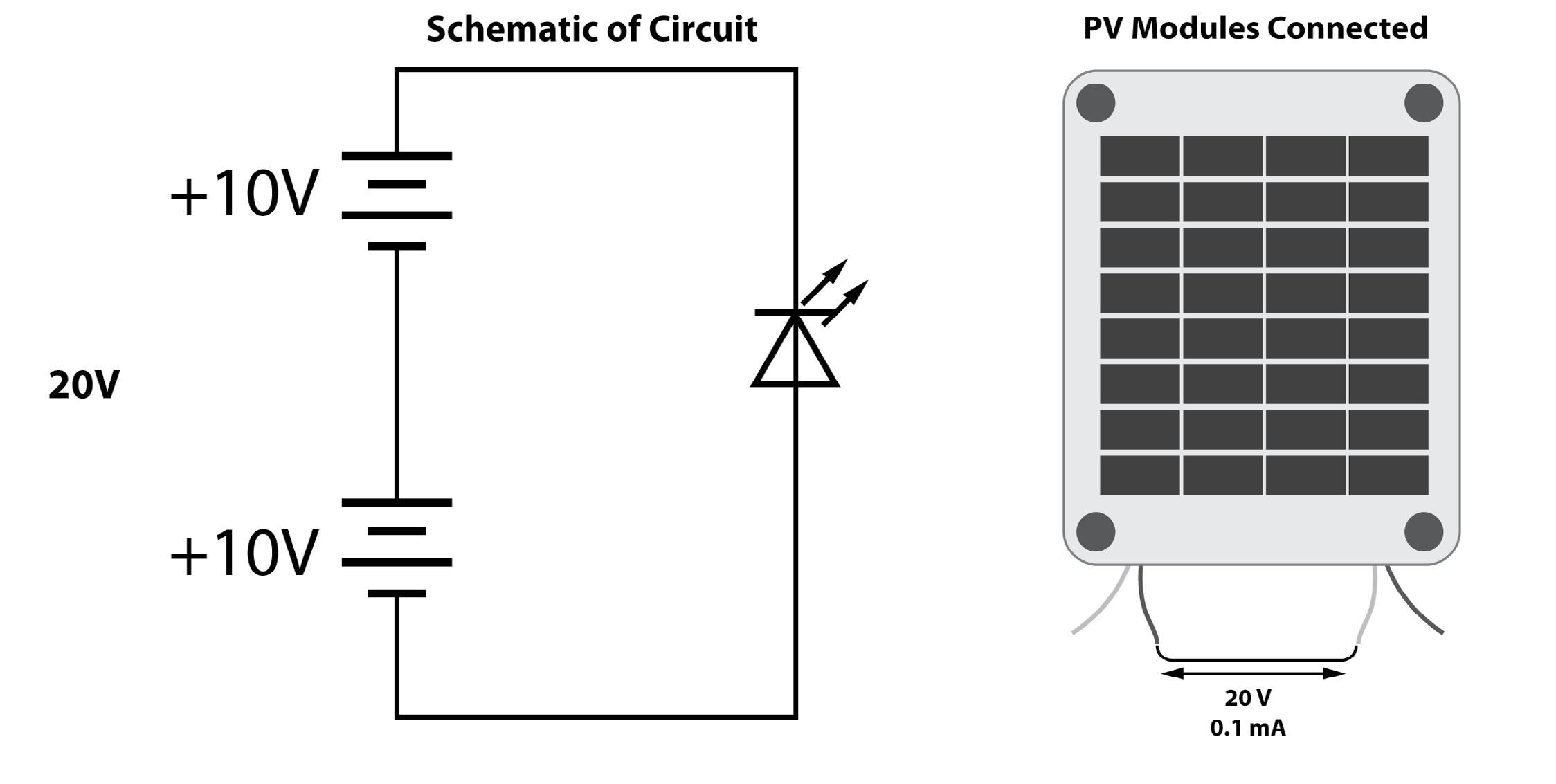

Power (P) is a measure of the rate of doing work or the rate at which energy is converted. Electric power is defined as the amount of electric current flowing due to an applied voltage. Electric power is measured in watts (W). The formula is:
power = voltage x current
P = V x I or W = V x A
In series circuits, the current remains constant while the voltage changes. To calculate total voltage, add the individual voltages together:
Itotal = I1 = I2 = I3
Vtotal = V1 + V2 + V3

In parallel circuits, the voltage remains constant while the current changes. To calculate total current, add the individual currents together:
Itotal = I1 + I2 + I3
Vtotal = V1 = V2 = V3

The effects of parallel and series circuitry on voltage output with multiple power sources.
With series circuits, the negative terminal of one component is connected to the positive terminal of the next component, like batteries in a typical flashlight (positive end contacting negative end of the next battery). With series circuits, the total voltage output is cumulative; the sum of the voltage of each component. With three 1.5 V components wired in a series circuit, the total output is 4.5 volts.
With parallel circuits, all positive terminals are connected and all negative terminals are connected in two strings. The total output voltage of several components wired in parallel is the same as a single component. Using jumper cables to start a car is an example of a parallel circuit with two batteries.
If three 1.5 V components are wired in parallel, the total output of the circuits is 1.5 volts.
Space heating means heating the space inside a building. Today, many homes use solar energy for space heating. There are two general types of solar space heating systems: passive and active.
In a passive solar home, the house itself operates as a solar collector. A passive home does not use any special mechanical equipment such as pipes, ducts, fans, or pumps to transfer the heat the house collects on sunny days. Instead, a passive solar home relies on properly oriented windows and is designed with added thermal mass to store and release heat. Since the sun shines from the south in North America, passive solar homes are built so that most of the windows face south. They often have few or no windows on the north side.
A passive solar home converts solar energy into heat just as a closed car does. Sunlight passes through a home’s windows and is absorbed in the walls and floors. Materials such as tile, stone, and concrete are often used, because they can store more heat than wood or sheetrock. To control the amount of heat in a passive solar home, the designer must determine the appropriate balance of mass in the floors and walls with the admission of sunlight. Windows let in the sunlight, which is converted into heat when it is absorbed by the walls and floors. The mass stores the heat from the sun and releases it when the air temperature inside drops below the temperature of the mass. Heating a home by warming the walls or floors is more comfortable than heating the air inside a home.
Additionally, the doors and windows can be closed to keep heated air in or opened to let it out, to keep the temperature in a comfortable range. At night, special heavy curtains or shades can be pulled over the windows to keep the daytime heat inside the home. In the summer, awnings or roof overhangs help to shade the windows from the high summer sun to prevent the home from overheating. Passive homes are quiet, peaceful places to live. A well-designed passive solar home can harness 30 to 80 percent of the heat it needs from the sun.
Many passive homeowners install equipment such as fans to help circulate air to further increase the comfort and energy efficiency of their homes. When special equipment is added to a passive solar home, it is called a hybrid system.
Unlike a passive solar home, an active solar home uses mechanical equipment such as pumps, blowers, and PV cells to convert radiant energy to thermal energy or electricity. Pumps and blowers allow for greater control of when, where, and how much of the collected heat from the sun gets used. This equipment delivers the heat from where it is collected to where it is needed.
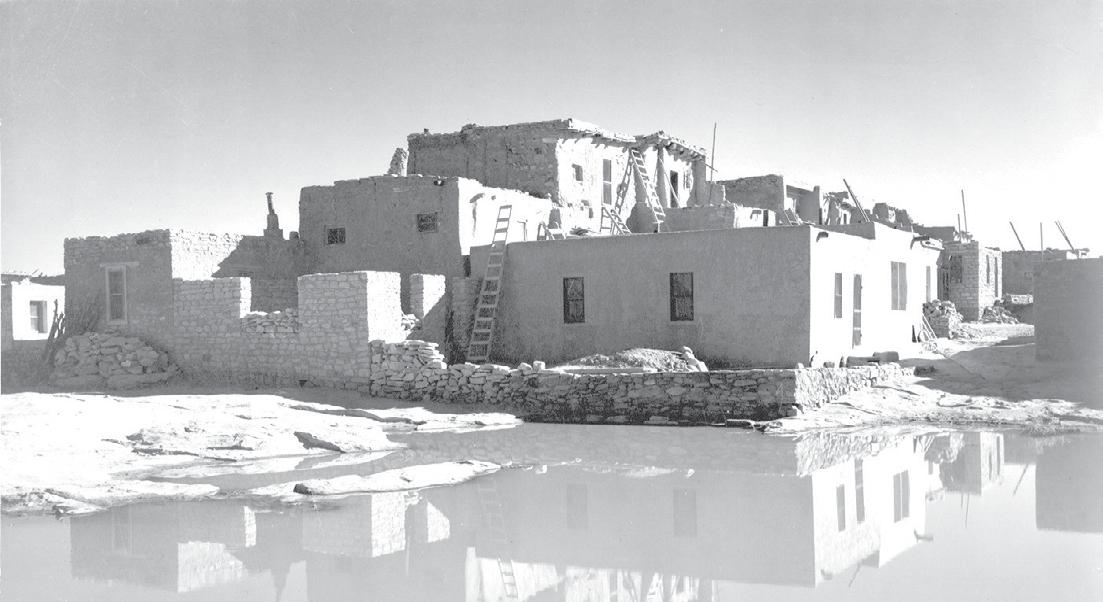

The challenge confronting any solar heating system—whether passive, active, or hybrid—is heat storage. Solar heating systems must have some way to store the heat that is collected on sunny days to keep people warm at night or on cloudy days.
In passive solar homes, heat is stored by using dense interior materials that retain heat well—masonry, adobe, concrete, stone, tile, or water. These materials absorb surplus heat and radiate it back into the room when the air temperature is lower than the surface temperature of the material. Some passive homes have walls up to one foot thick.
In active solar homes, heat may be stored in one of two ways—a large tank may store a heated liquid, or rock bins beneath the house may store warm mass. Houses with active or passive solar heating systems may also have furnaces, wood-burning stoves, or other heat sources to provide heat during long periods of cold or cloudy weather. These are called back-up systems.
Solar energy is also used to heat water. Water heating is the second largest home energy expense, costing the average family more than $300 a year. Installing a solar water heater can save 50 to 80 percent of your water heating bill, depending on which type of back-up system you have, where you live, and how much hot water your family uses. A well-maintained solar water heating system can last around 20 years, longer than a conventional water heater.
A solar water heater works in the same way as solar space heating. A solar collector is mounted on the roof, or in an area of direct sunlight. It collects sunlight and converts it to heat. Solar water heaters then circulate the fluid to the home. Passive solar water heaters rely on gravity only to make this happen. Active solar water heaters rely upon pump systems. In an active solar water heater, When the fluid in the system becomes hot enough, a thermostat starts a pump. The pump circulates the fluid through the collector until it reaches the required temperature, called the set point. Then the heated fluid is pumped to a storage tank where it is used in a heat exchanger to heat water.
The hot water may then be piped to a faucet or showerhead. Most solar water heaters that operate in cold climates use a heat transfer fluid similar to antifreeze that will not freeze and damage the system.
Today, millions of homes in the U.S. use solar heaters to heat water for use in household activities or swimming pools.

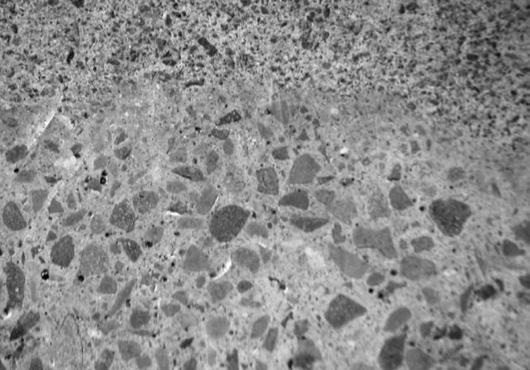


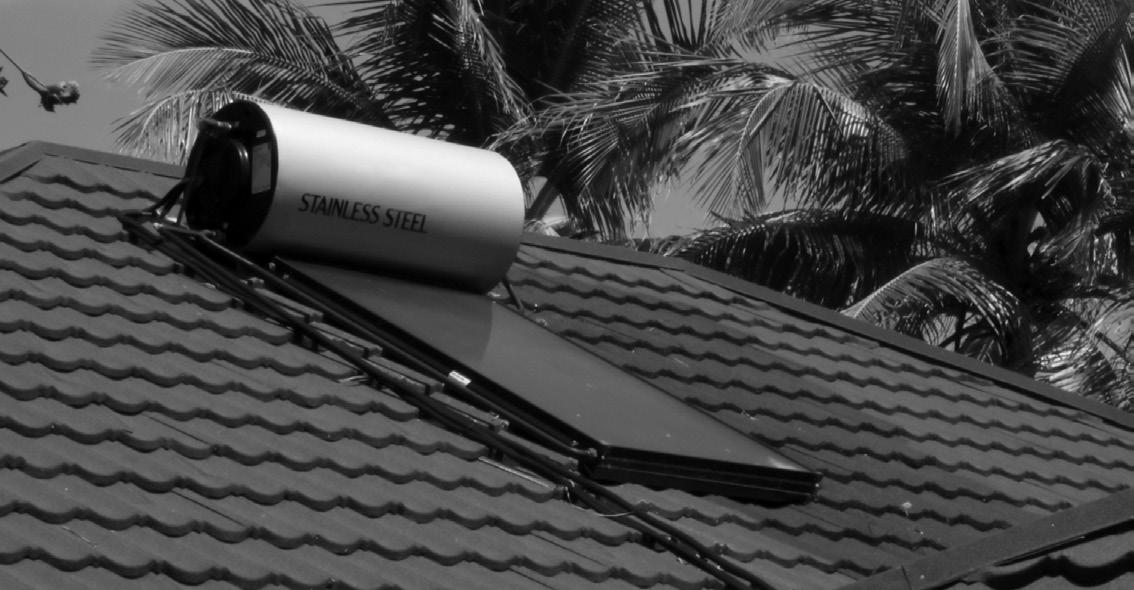
Passive solar water heaters work best in areas where temperatures rarely fall below freezing. They also work well in households with significant daytime and evening hot water needs. This image depicts a passive solar water heater, as it does not use a pump and relies upon gravity for circulation.
A. Has used a solar clothes dryer
E. Can explain how solar energy drives the water cycle
I. Knows how plants convert solar energy into chemical energy
M. Can name two advantages of solar energy
B. Knows the average conversion efficiency of PV cells
F. Has used a photovoltaic cell
J. Uses passive solar energy at home
N. Knows the energy conversion that a PV cell performs
C. Knows the nuclear process in the sun’s core
G. Rides in a solar collector
D. Knows how radiant energy travels through space
H. Can explain how solar energy produces wind
K. Has seen a solar water heater L. Has cooked food in a solar oven
O. Can explain why dark clothes make you hotter in the sun
P. Owns solar protection equipment
have energy.
Who has the two major gases that make up the sun?
I have hydrogen and helium.
Who has the process in which very small nuclei are combined into larger nuclei?
I have the speed of light.
Who has the form of energy that sunlight is converted to when it is absorbed by the Earth?
I have thermal energy.
Who has the color that absorbs more sunlight than other colors?
I have nuclear fusion.
Who has the form of energy emitted into space by stars and the sun during fusion?
I have the color black.
Who has a system that captures solar energy and uses it to heat spaces or substances?
I have radiant energy.
Who has the amount of time it takes the sun’s energy to reach the Earth?
I have a solar collector.
Who has the process of using the sun’s energy to heat buildings?
I have eight minutes.
Who has 186,000 miles per second?
I have solar space heating.
Who has a home that relies on orientation and construction materials to capture the sun’s energy for heating interior spaces?
Who has a home with solar collectors and other solar equipment to heat it?
I have an active solar home.
Who has the energy source produced by uneven heating of the Earth’s surface?
I have wind.
Who has organic matter that has absorbed energy from the sun?
I have biomass.
Who has the energy sources that can be replenished in a short time?
I have renewables.
Who has the form of energy that is stored in fossil fuels?
I have chemical energy.
Who has the process that traps the sun’s energy in the atmosphere and makes life on Earth possible?
I have the greenhouse effect.
Who has the process plants use to convert radiant energy into chemical energy?
I have photosynthesis.
Who has evaporation, condensation, and precipitation driven by energy from the sun?
I have the water cycle.
Who has an object that can be used to cook food on a sunny day?
I have a solar oven.
Who has the system that uses mirrors to capture the sun’s energy?
I have concentrated solar power.
Who has the Greek word that means light?
I have photo.
Who has tiny bundles of energy from the sun?
I have photons.
Who has the form of energy directly produced by solar cells?
I have electrical energy.
Who has the technical word that is abbreviated as PV ?
I have photovoltaic.
Who has the element that is a semi-conductor used to make PV cells?
I have silicon.
Who has the device that nearly 2 million U.S. homes use to increase the thermal energy in their water?
I have solar water heater.
Who has the direction solar collectors should face in the U.S.?
I have south.
Who has a major reason that capturing sunlight is difficult?
I have solar is spread out.
Who has the only renewable energy source that is NOT produced by the sun’s energy?
I have geothermal.
Who has the ability to do work or cause a change?
1. Did you conduct the entire unit?
2. Were the instructions clear and easy to follow?
3. Did the activities meet your academic objectives?
4. Were the activities age appropriate?
5. Were the allotted times sufficient to conduct the activities?
6. Were the activities easy to use?
Yes
No
No
Yes
7. Was the preparation required acceptable for the activities? Yes
8. Were the students interested and motivated?
Yes
9. Was the energy knowledge content age appropriate? Yes
10. Would you teach this unit again?
No
No
No
Yes
No Please explain any ‘no’ statement below How would you rate the unit
How would your students rate the unit overall?
What would make the unit more useful to you?
Other Comments:
AES
AES Clean Energy Development
American Electric Power Foundation
Appalachian Voices
Arizona Sustainability Alliance
Atlantic City Electric
Baltimore Gas & Electric
Berkshire Gas - Avangrid
BP America Inc.
Bob Moran Charitable Giving Fund
Cape Light Compact–Massachusetts
Celanese Foundation
Central Alabama Electric Cooperative CITGO
The City of Cuyahoga Falls
Clean Virginia CLEAResult
ComEd
Con uence
ConocoPhillips
Constellation
Delmarva Power and Light
Department of Education and Early Childhood
Development - Government of New Brunswick, Canada
Dominion Energy, Inc.
Dominion Energy Charitable Foundation
DonorsChoose
East Baton Rouge Parish Schools
East Kentucky Power Cooperative
EcoCentricNow
EDP Renewables
EduCon Educational Consulting
Enel Green Power North America
ENGIE
Entergy
Equinix
Eversource
Exelon
Exelon Foundation
Foundation for Environmental Education
FPL
Generac
Georgia Power
Gerald Harrington, Geologist
Government of Thailand–Energy Ministry
Greater New Orleans STEM
GREEN Charter Schools
Green Power EMC
Guilford County Schools–North Carolina
Honeywell
Iowa Governor’s STEM Advisory Council -
Scale Up
Iowa Lakes Community College
Iowa State University
Illinois Clean Energy Community Foundation
Illinois International Brotherhood of Electrical
Workers Renewable Energy Fund
Independent Petroleum Association of New Mexico
Intuit
Iron Mountain Data Centers
Kansas Corporation Energy Commission
Kansas Energy Program – K-State Engineering Extension
Katy Independent School District
Kentucky Environmental Education Council
Kentucky O ce of Energy Policy
Kentucky Power–An AEP Company
Liberty Utilities
Llano Land and Exploration
Louisiana State Energy O ce
Louisiana State University – Agricultural Center
LUMA
Marshall University
Mercedes Benz USA
Minneapolis Public Schools
Mississippi Development Authority–Energy Division
Motus Experiential
National Fuel
National Grid
National Hydropower Association
National Ocean Industries Association
National Renewable Energy Laboratory
NC Green Power
Nebraskans for Solar
NextEra Energy Resources
Nicor Gas
NCi – Northeast Construction
North Shore Gas
O shore Technology Conference
Ohio Energy Project
Oklahoma Gas and Electric Energy Corporation
Omaha Public Power District
Ormat
Paci c Gas and Electric Company
PECO
Peoples Gas
Pepco
Performance Services, Inc.
Permian Basin Petroleum Museum
Phillips 66
PowerSouth Energy Cooperative
PPG
Prince George’s County O ce of Human Resource Management (MD)
Prince George’s County O ce of Sustainable Energy (MD)
Providence Public Schools
Public Service of Oklahoma - AEP
Quarto Publishing Group
The Rapha Foundation
Renewable Energy Alaska Project
Rhoades Energy
Rhode Island O ce of Energy Resources
Salal Foundation/Salal Credit Union
Salt River Project
Salt River Rural Electric Cooperative
Schneider Electric
C.T. Seaver Trust
Secure Solar Futures, LLC
Shell USA, Inc.
SMUD
Society of Petroleum Engineers
South Carolina Energy O ce
Southern Company Gas
Snohomish County PUD
SunTribe Solar
TXU Energy
United Way of Greater Philadelphia and Southern New Jersey
Unitil
University of Iowa
University of Louisville
University of North Carolina
University of Northern Iowa
University of Rhode Island
U.S. Department of Energy
U.S. Department of Energy–O ce of Energy
E ciency and Renewable Energy
U.S. Department of Energy - Solar Decathlon
U.S. Department of Energy - Water Power
Technologies O ce
U.S. Department of Energy–Wind for Schools
U.S. Energy Information Administration
United States Virgin Islands Energy O ce
Virginia Cooperative Extension
Vistra Energy
We Care Solar
West Virginia O ce of Energy
West Warwick Public Schools